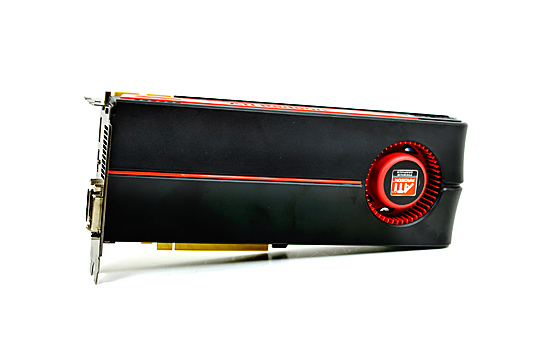The RV870 Story: AMD Showing up to the Fight
by Anand Lal Shimpi on February 14, 2010 12:00 AM EST- Posted in
- GPUs
Final Words
Unlike a product review, there’s very little I can do to conclude here. There’s no buying recommendation, no performance to summarize. Even as an analytical piece there’s not much for me to conclude based on what I’ve learned at this point. When I wrote The RV770 Story I was convinced that ATI had embraced a new, refocused approach to GPU design, only to learn that they nearly threw out all of the learnings with the RV870.
The Northern Islands GPUs, due out later this year, were surely designed before anyone knew how RV870 would play out. Much less whether or not Fermi/GF100 would be this late.

I’m not sure any of what we’ve seen thus far in the history leading up to the RV770 or RV870 can tell us what we should expect from Northern Islands. While we can’t conclude about ATI’s future products, I do believe I have learned a considerable amount about how AMD’s graphics division works.
Carrell told me that the process of doing a product is not a logical process. There's logic in it, but it's not a logical process. It's an argumentative process. Not in the sense of having conflicts, but rather developing new data when the data isn't all there. When companies like AMD and NVIDIA do a product the engineers don't know all of the answers, and the knowledge they do have isn't binary - it's probability, it's weight, it's guesses. Sometimes they guess right, and sometimes they guess very wrong. The best they can do is to all weigh in with their individual experiences and together come up with the best group of guesses to implement. Over the years it seems that ATI has learned to, as much as possible, have all members of its team bought in to the product they're building.
The graphics team’s dedication and experience in jumping to new process technologies seems to have paid off with this generation. The move from TSMC to Global Foundries will surely challenge them once more. It’s not all about process technology though. The team’s focus on schedule and execution was a much needed addition to the company’s repertoire.
Carrell Killebrew helped turn ATI from a traditional GPU company with a poor track record, to one that could be known for its execution. The past three product generations have been executed extremely well. Regardless of whether you're an AMD, Intel or NVIDIA fan, you must give credit where it's due. The past couple of years have shown us a dramatic turn around from the graphics group at AMD. To go from the shakiness of the R500 and R600 GPUs to solidly executing on the RV670, 770 and 870 year after year is praiseworthy. I almost wonder if AMD’s CPU team could learn from the graphics group's execution. I do hope that along with the ATI acquisition came the open mindedness to learn from one another.










132 Comments
View All Comments
cjb110 - Sunday, February 14, 2010 - link
Agreed, excellent article. Well written and informative, coverage of the other aspects of the industry is always welcome.Bull Dog - Sunday, February 14, 2010 - link
I'll second that. Articles like these are what differentiate AnandTech from all the other sites out there. AnandTech goes from being one of the best review sites out there to something special.You have my heartfelt thanks Anand.